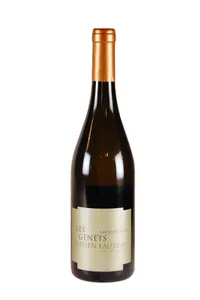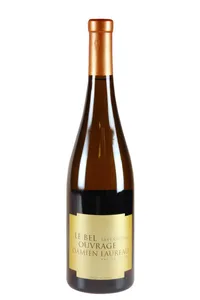Free delivery from Fr. 300 of purchase or 18 bottles, otherwise Fr. 15

Loire
Characterised by an extraordinary diversity of wine types and grape varieties, the Loire Valley is not easy to summarise. This important vineyard, which originated in Roman colonisation, is in fact the most extensive in France, since it stretches over almost a thousand kilometres, from the south of Brittany to the Massif Central. To better understand it, it is useful to divide it into its main regions, along the Loire River, from northwest to southeast.
The Pays Nantais
It was Roman legions who brought the vine here two thousand years ago, at the crossroads of Brittany, the Vendée, the Loire and the Ocean. After a terrible winter in 1709 when the sea froze along the coast, the vineyard was completely destroyed, then reconstituted mainly with plants of the melon grape variety from Burgundy. The production area today covers 16,000 hectares on sunny hillsides exposed to oceanic influences. The soils are composed of ancient soils intermingled with eruptive rocks. The white counterpart of Beaujolais, the potential of Muscadet PDO wines is underestimated, the best of which can benefit from ageing for twenty years or more. In this regard, 10 strictly cadastral communal crus whose pedology has been identified are resellable today, by the top producers.
The Anjou
Most of France's great vineyards producing wines for ageing come from clay-limestone soils. The most original luck of Anjou is to have a vineyard mainly cultivated on schist or volcanic soils. The whole region also forms a Mediterranean enclave in the heart of the oceanic environment and allows for optimal ripeness.
Parallel to the very vast Anjou appellation, declining dry wines of chenin or cabernet franc, one finds a certain number of " liquoreuses " appellations such as Coteaux du Layon, de l'Aubance, Bonnezeaux, Chaume and Quarts de Chaume, which alas tend to disappear because the public amateur of these wines has been reduced to skin of chagrin !
In dry wine, Savennières remains the most prestigious vineyard and is by far the greatest purveyor of vins de garde in the region, the one that can rival Burgundy. The vineyard is composed of four slopes perpendicular to the Loire, with characteristic schistose soils. The best exposure is by far that of the Clos de la Coulée de Serrant. Adjacent to the latter, Roche aux Moines produces almost equally full-bodied wines, with a strong minerality, which justify a unique status within the appellation and higher prices.
The Saumurois
Located between Anjou and Touraine, the Saumurois, with its characteristic chalk tuffeau soils, is the up-and-coming vineyard. It is full of great talents, young or more experienced. It is a source of very fine dry chenins for ageing and a Cabernet Franc red that has become famous, Saumur-Champigny, which has contributed greatly to the reputation of this region, thanks in particular to the aura of some famous producers. The range of wines is wide, from the most diaphanous of thirst-quenchers to the greatest reds for ageing, aging for more than 30 years.
The Touraine
Here we are in the very heart of the Loire Valley. " Touraine " is a vast protean appellation and its many grape varieties give rise to a large number of refreshing white wines made from sauvignon, chardonnay, chenin, pineau menu, romorantin, etc. But also rosés and reds fond of gamay, cabernet, côt, pineau d'Aunis, etc.
The other appellations, communal, have many assets. Both in chenin (Jasnières, Vouvray and Montlouis) and in cabernet franc (Coteaux du Loir, Chinon, Bourgueil and St-Nicolas de Bourgueil), the wines from these historic hillside terroirs reveal a real identity and significant ageing potential. Cheverny, meanwhile, is closer to the Touraine appellation in that it allows for many grape varieties, while Cour-Cheverny is strictly centred on the rare Romorantin, which produces wines with a strong identity.
But let's get back to Vouvray, located on a plateau and made up of two types of clay-limestone soils : aubuis and perruches. The vineyard gives birth to very interesting white wines in dry, dry-tender, semi-dry, sweet, syrupy or effervescent (sparkling by ancestral or traditional method) - whose capacity to improve with time is, for some of them, legendary, not to say proverbial.
As for the reds from the region of St-Nicolas de Bourgueil, Bourgueil or Chinon, they illustrate, depending on the geological provenance and the producers, both the fruity and fruity style and the great red wine made for ageing. As such, tasting a great Bourgueil or Chinon, after a few years in the cellar, is a form of apotheosis of the Loire Cabernet.
The Centre
Their vineyards include the emblematic appellations Sancerre and Pouilly-Fumé ; and other lesser known ones (Reuilly, Menetou-Salon, Quincy) which are also worthy of the interest of the amateur. On these clay-limestone soils, which modulate the different Jurassic levels (Kimmeridgian, Oxfordian, Portlandian), a semi-continental climate prevails. It is here that the Sauvignon grape flourishes and, on the best exposures and soils, acquires an inimitable elegance, finesse and character. Let us not forget to mention the pinot noir which, on certain terroirs of Sancerre, has nothing to envy to certain very beautiful Burgundian expressions.
80 items
Saumur blanc, Clos Romans, Roches Neuves - 2015
Saumur
Saumur blanc, Clos Romans, Roches Neuves - 2016
Saumur

Savennières, Les Genêts, Damien Laureau - 2015
Savennières
Saumur blanc, Clos Romans, Roches Neuves - 2017
Saumur
Saumur-Champigny, Clos de l'Echelier, Roches Neuves - 2017
Saumur-Champigny
Saumur blanc, L'Echelier, Roches Neuves - 2017
Saumur

Saumur blanc, Terres (vin orange), Roches Neuves - 2020
Saumur

Savennières, Bel Ouvrage, Damien Laureau - 2018
Savennières

Saumur-Champigny, Franc de Pied, Roches Neuves - 2021
Saumur-Champigny

Saumur-Champigny, Clos de l'Echelier, Roches Neuves - 2021
Saumur-Champigny

Saumur-Champigny, Outre Terre (amphore), Roches Neuves - 2021
Saumur-Champigny

Saumur-Champigny, Marginale, Roches Neuves - 2021
Saumur-Champigny